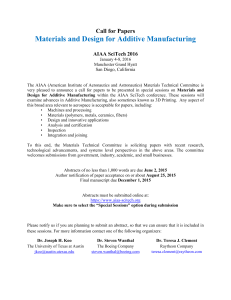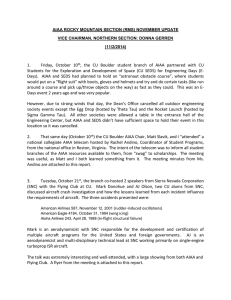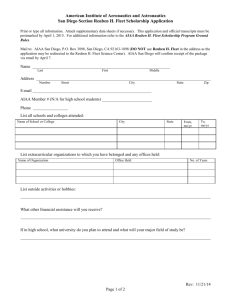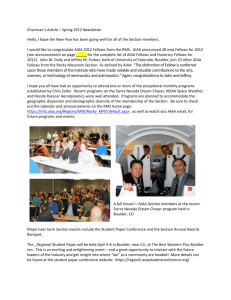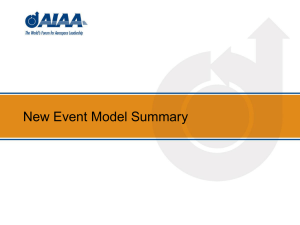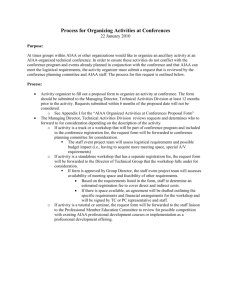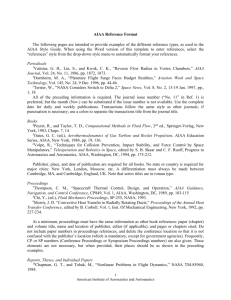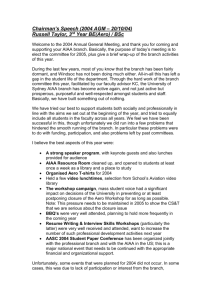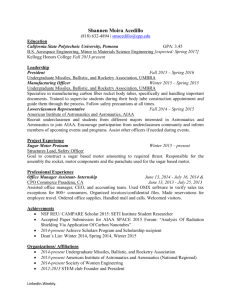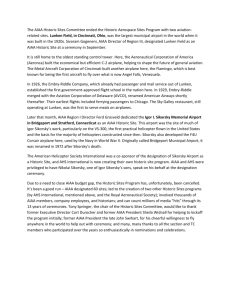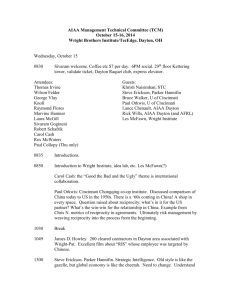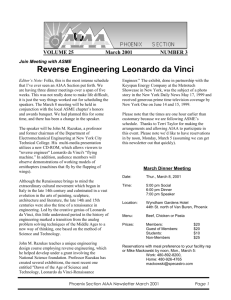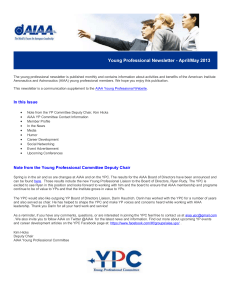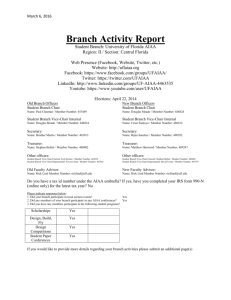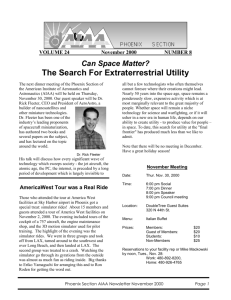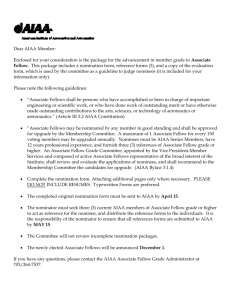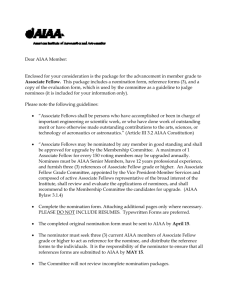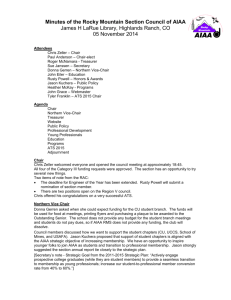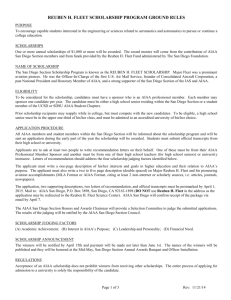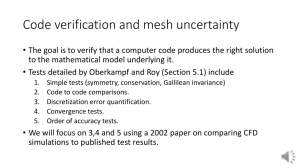Section I: Miscellaneous Grammatical and Style Preferences
advertisement
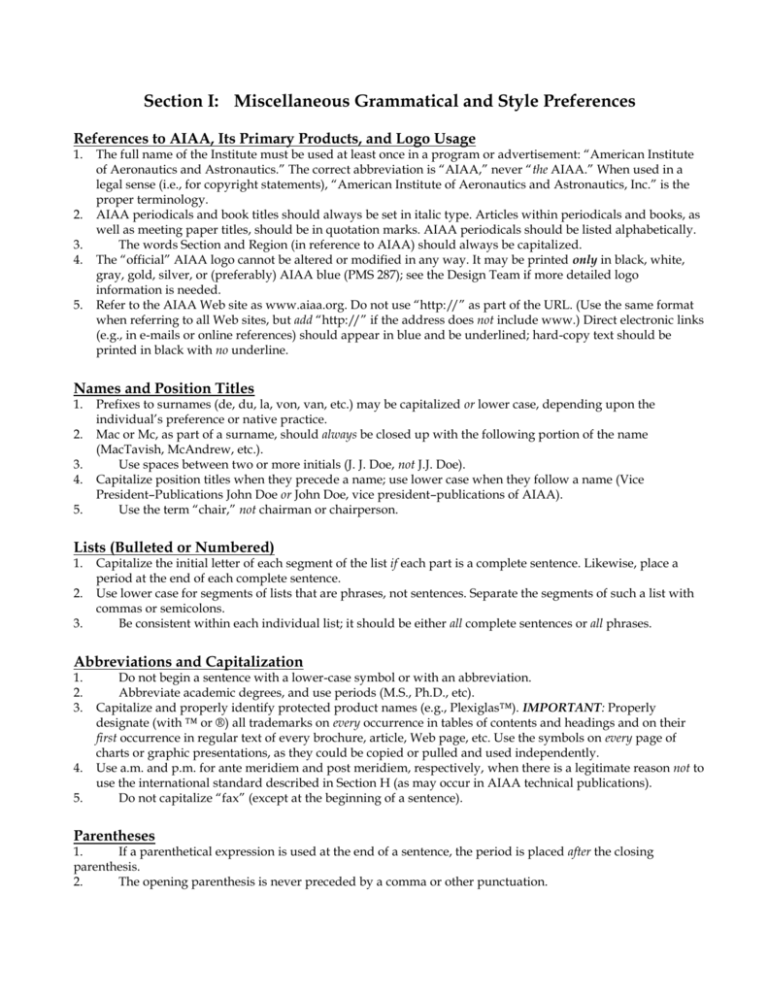
Section I: Miscellaneous Grammatical and Style Preferences References to AIAA, Its Primary Products, and Logo Usage 1. 2. 3. 4. 5. The full name of the Institute must be used at least once in a program or advertisement: “American Institute of Aeronautics and Astronautics.” The correct abbreviation is “AIAA,” never “the AIAA.” When used in a legal sense (i.e., for copyright statements), “American Institute of Aeronautics and Astronautics, Inc.” is the proper terminology. AIAA periodicals and book titles should always be set in italic type. Articles within periodicals and books, as well as meeting paper titles, should be in quotation marks. AIAA periodicals should be listed alphabetically. The words Section and Region (in reference to AIAA) should always be capitalized. The “official” AIAA logo cannot be altered or modified in any way. It may be printed only in black, white, gray, gold, silver, or (preferably) AIAA blue (PMS 287); see the Design Team if more detailed logo information is needed. Refer to the AIAA Web site as www.aiaa.org. Do not use “http://” as part of the URL. (Use the same format when referring to all Web sites, but add “http://” if the address does not include www.) Direct electronic links (e.g., in e-mails or online references) should appear in blue and be underlined; hard-copy text should be printed in black with no underline. Names and Position Titles 1. 2. 3. 4. 5. Prefixes to surnames (de, du, la, von, van, etc.) may be capitalized or lower case, depending upon the individual’s preference or native practice. Mac or Mc, as part of a surname, should always be closed up with the following portion of the name (MacTavish, McAndrew, etc.). Use spaces between two or more initials (J. J. Doe, not J.J. Doe). Capitalize position titles when they precede a name; use lower case when they follow a name (Vice President–Publications John Doe or John Doe, vice president–publications of AIAA). Use the term “chair,” not chairman or chairperson. Lists (Bulleted or Numbered) 1. 2. 3. Capitalize the initial letter of each segment of the list if each part is a complete sentence. Likewise, place a period at the end of each complete sentence. Use lower case for segments of lists that are phrases, not sentences. Separate the segments of such a list with commas or semicolons. Be consistent within each individual list; it should be either all complete sentences or all phrases. Abbreviations and Capitalization 1. 2. 3. 4. 5. Do not begin a sentence with a lower-case symbol or with an abbreviation. Abbreviate academic degrees, and use periods (M.S., Ph.D., etc). Capitalize and properly identify protected product names (e.g., Plexiglas™). IMPORTANT: Properly designate (with ™ or ®) all trademarks on every occurrence in tables of contents and headings and on their first occurrence in regular text of every brochure, article, Web page, etc. Use the symbols on every page of charts or graphic presentations, as they could be copied or pulled and used independently. Use a.m. and p.m. for ante meridiem and post meridiem, respectively, when there is a legitimate reason not to use the international standard described in Section H (as may occur in AIAA technical publications). Do not capitalize “fax” (except at the beginning of a sentence). Parentheses 1. If a parenthetical expression is used at the end of a sentence, the period is placed after the closing parenthesis. 2. The opening parenthesis is never preceded by a comma or other punctuation. 3. If a complete sentence is enclosed in parentheses, it must begin with a capital letter and end with a period before the closing parenthesis. Plurals and Possessives 1. Do not use apostrophes to form the plurals of acronyms or numbers: ICBMs, 1980s. 2. Apostrophes precede the “s” for singular possessives (Tom’s). For words ending in “s,” add an apostrophe but not an additional “s” (i.e., Jones’, not Jones’s). Punctuation and Spacing 1. 2. 3. 4. Quotation marks: • Place quotation marks after commas and periods but before colons and semicolons. Commas: • Insert a comma before the final “and” or “or” in a series of three or more. • Use commas in numbers of five or more digits (12,000) but not four or fewer digits (2000). • Do not use a comma preceding the suffixes “Jr.,” “II,” etc. Hyphens and dashes: • Use hyphens in words with multiple parts (quasi-one-dimensional). • Use en dashes to indicate a range of numbers (12–16 April). • Use em dashes, when desired, to replace parentheses (“… or—if that is impossible—it may be mailed.”). Spaces: • Use a single space—never a double space—between sentences. Word Choices 1. 2. 3. 4. 5. 6. 7. 8. Affect/effect: • Use “affect” as a verb meaning “to influence.” • Use “effect” as a noun referring to the result of, or as a verb meaning “to bring about.” Biannual/biennial: • Use “biannual” to indicate twice a year. • Use “biennial” to indicate every two years. Compared to/compared with: • Use “compared to” when the intent is to put two things in the same category. • Use “compared with” when the intent is to examine either differences or similarities. Compose/comprise: • Use “composed of” (made up of or put together with). • Use “comprises” or “comprising” (embraces or embracing). • Never use “comprised of.” Continuously/continually: • Use “continuously” to refer to marked, uninterrupted extensions in space, time, or sequence. • Use “continually” to refer to indefinite continuations in time without interruption. Ensure/insure/assure: • Use “ensure” when the meaning is to guarantee. • Use “insure” when the meaning is to protect against a loss. • Use “assure” for either of these meanings. Preceding/proceeding: • Use “preceding” to refer to something previously stated. • Use “proceeding” to mean “moving forward.” While/although/whereas: • Use “while” to indicate “at the same time.” • Use “although” or “whereas” to mean “even if” or “though.”
